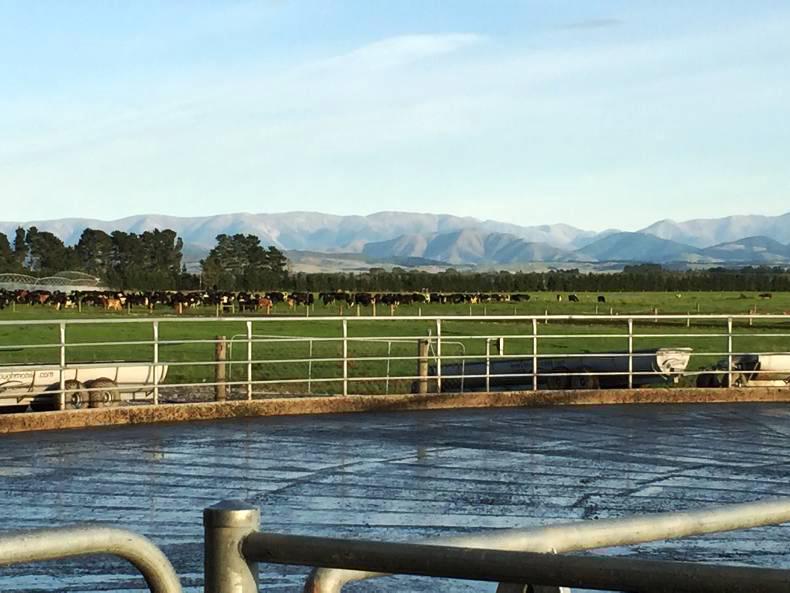After travelling over 20,000km, I finally arrived in New Zealand in the early hours of the morning on the 13 January 2016. On spending my first night in a backpackers’ hostel in Christchurch, I anxiously awaited our placement officer Carmen Ryan to collect me and the eight other Waterford Institute of Technology (WIT) students I travelled with, and take us to our farms where we would spend the next 16 weeks.
I arrived on the farm of Birchdale Dairies Ltd later that day. It is located in the Selwyn District of Canterbury, New Zealand, between Christchurch and Ashburton. Paget Milsom, a heart surgeon in a busy hospital in Auckland (but former farmer), owns the farm and Birchdale Dairies Ltd.
The farm is managed by Erik Lenssen and consists of 773 kiwi cross jersey cows, which are split into two herds. Herd one has 448 cows and herd two, which is once-a-day milking, has 325 cows mainly made up of first-calvers. They both graze on a 190ha grazing platform with only 183ha under irrigation on a 34-day round, giving the farm a stocking rate of 4.3 LU/ha – which is very high and practically unheard of in Ireland.
Bleak picture
Upon my arrival to the farm, I discovered the pictures I had built in my head were far from reality. The perfectly laid out farms with their lush green pastures we consistently hear about were not what I was experiencing as I made my way up the rough tanker track to the dairy shed.
Being honest, the farm looked very bleak, with little infrastructure except for the simple dairy shed and a collecting yard. It was a far cry from what I was used to at home. It was daunting as I stood looking at my surroundings and thinking: “Is this actually it? A shed and fields?”
After I settled in and had a farm walk with Erik and the 2IC (second in charge) David Fogarty, who is from Kilkenny, I began to learn more about the farm, and how it is only a new conversion to a dairy farm from a tillage and beef enterprise. I then began to see through the farm’s simple, bleak layout and understand the principles of Birchdale Dairies as a profit-making enterprise.
Managing a high stocking rate and milking large herds
As the skies began to clear and the Southern Alps came into view, I began to appreciate my host farm.
I learned that managing a very high stocking rate is a daunting but very rewarding task if done correctly. The high stocking rate means that the cows on this farm are entering covers of 3,500kg DM/ha. They graze it down to 1,500kg DM/ha to maintain a 2,500kg DM/ha cover average. This ensures the cows have the adequate amount of grass needed for high-solids milk production.
By going in on high covers and grazing to 1,500kg DM/ha residual, the grass regrowth is rapid, even and of high quality. This leads to greater utilisation, which Erik says “is key to keeping the business low-cost, making money and viable in the future”.
There is method to Erik’s madness. The second herd are used to ensure the 1,500 residual is achieved by grazing paddocks that have not been grazed properly by the first herd
You might be wondering why we only milk the second herd once a day when you can milk them twice. There is method to Erik’s madness. The second herd are used to ensure the 1,500 residual is achieved by grazing paddocks that have not been grazed properly by the first herd.
Also, having the second herd made up of mostly first-calvers means more heifers in calf, fewer lameness issues and good growth rates and development of the younger stock. The second herd gets moved on to high covers for the evening and night to ensure their production and condition is not jeopardised.
Martin Duggan is a BSc agricultural science student at Waterford Institute of Tehchnology from Galmoy in Co Kilkenny. He received the ASA/Arvum Group travel bursary supported by the Irish Farmers Journal.






 This is a subscriber-only article
This is a subscriber-only article






SHARING OPTIONS: